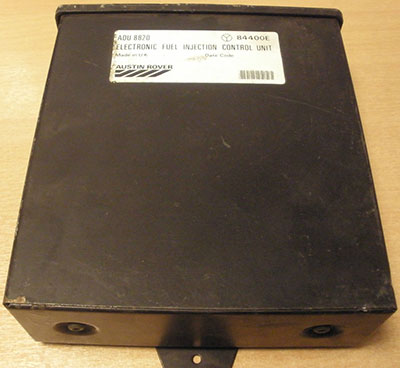In the modern age of technology, satellite navigation systems, commonly known as Sat Navs, have become an indispensable tool for travellers, commuters, and truckers alike. These devices provide real-time navigation, guiding users through intricate routes, saving time, and reducing stress. However, the rise in their usage raises critical questions about their impact on the environment. As the world increasingly focuses on sustainability, examining the environmental implications of Satellite Navigation in the UK becomes imperative.

Sat Navs: Revolutionizing Navigation
Satellite navigation systems revolutionized the way people navigate. By utilizing GPS (Global Positioning System) technology, these devices efficiently calculate routes, offering turn-by-turn directions and live traffic updates. In the UK, these gadgets have become synonymous with convenient travel, aiding individual commuters and the transportation industry, including the logistics and trucking sectors.
Read more: Unveiling the Environmental Benefits of ECU Repair for Volvo Electric Vehicles
The Environmental Footprint of Satellite Navigation
While Sat Navs enhance convenience, their environmental impact warrants scrutiny. The primary concerns lie in their energy consumption, manufacturing processes, and disposal:
- Energy Consumption: Sat Navs require power to operate, relying on battery life or connecting to a vehicle’s power supply. The constant use of these devices contributes to increased energy consumption, albeit on a smaller scale compared to other electronic devices.
- Manufacturing Processes: The production of Satellite Navigation involves the use of resources and energy, contributing to carbon emissions. Materials like plastics, metals, and electronic components are utilized, further impacting the environment.
- Electronic Waste: As technology evolves, older Sat Nav models become obsolete, leading to electronic waste. Improper disposal can result in environmental pollution due to hazardous materials present in these devices.
Navigating Sustainably with Satellite Navigation
Efforts to mitigate the environmental impact of Satellite Navigation can be implemented:
- Energy-efficient Designs: Manufacturers can focus on designing energy-efficient Satellite Navigation that consumes less power, potentially utilizing renewable energy sources or improving battery life.
- Recycling Programs: Implementing effective recycling programs for old or obsolete devices can significantly reduce electronic waste. Encouraging users to recycle or trade in old devices for newer, more efficient models can be beneficial.
- Software Updates: Regular software updates can improve the efficiency of Satellite Navigation, optimizing routes and reducing unnecessary fuel consumption for vehicles following their guidance.
The Role of Users and Regulations
Users can contribute to sustainability by responsibly using and disposing of their Sat Navs. Choosing energy-saving settings, updating maps rather than purchasing new devices, and recycling old units are steps individuals can take to minimize their environmental impact.
Moreover, governmental regulations and industry standards can play a pivotal role. Implementing eco-design standards for Satellite Navigation, incentivizing manufacturers to create more environmentally friendly devices, and promoting responsible disposal practices through policies and awareness campaigns can collectively mitigate the environmental concerns associated with Satellite Navigation.
Commonly Asked Questions
1. How do Sat Navs contribute to environmental concerns?
Satellite Navigation, while providing convenient navigation, contribute to environmental concerns primarily due to their energy consumption, manufacturing processes involving resources and energy, and the generation of electronic waste upon disposal.
2. Are Sat Navs energy-efficient devices?
While efforts have been made to improve energy efficiency, Satellite Navigation still consume power, either from batteries or a vehicle’s power supply, contributing to energy consumption, albeit at varying levels compared to other electronic devices.
3. What materials are used in the manufacturing of Satellite Navigation?
Sat Navs typically contain various materials, including plastics, metals, and electronic components. The production of these devices involves the use of resources and energy, impacting the environment.
4. How can users reduce the environmental impact of Satellite Navigation?
Users can contribute by adopting energy-saving settings, updating software rather than purchasing new devices, and responsibly disposing of old units through recycling programs or trade-in options offered by manufacturers.
5. Are there any governmental regulations addressing the environmental impact of Satellite Navigation?
There might not be specific regulations directly targeting Satellite Navigation’s environmental impact. However, broader electronic waste regulations and eco-design standards for electronic devices contribute indirectly to mitigating their environmental impact.
6. Can Sat Nav manufacturers play a role in reducing environmental concerns?
Yes, manufacturers can play a significant role by focusing on eco-design principles, producing energy-efficient devices, implementing recycling programs for old units, and promoting responsible disposal practices.
7. What steps can be taken to improve the sustainability of Satellite Navigation?
Efforts to improve sustainability include designing energy-efficient models, encouraging responsible disposal through recycling initiatives, and providing software updates to optimize navigation routes and reduce unnecessary fuel consumption.
8. Do newer Sat Nav models have improved environmental features?
Some newer models may incorporate energy-saving features or improvements aimed at reducing environmental impact. However, comprehensive eco-friendly designs and features across the industry might still be in progress.
9. How can consumers dispose of old or obsolete Satellite Navigation responsibly?
Consumers are encouraged to utilize manufacturer-provided recycling programs or explore electronic waste recycling centres for responsible disposal. Some manufacturers also offer trade-in programs for old devices.
10. What role can individuals play in advocating for sustainable navigation practices?
Individuals can raise awareness about the responsible usage and disposal of Sat Navs, support initiatives promoting eco-friendly designs, and actively participate in recycling programs to reduce electronic waste.
Conclusion
Sat Navs have undeniably transformed navigation, offering unparalleled convenience. However, their environmental impact cannot be overlooked. The path to sustainable navigation in the UK involves a collaborative effort among manufacturers, users, and regulatory bodies to reduce energy consumption, promote recycling, and minimize the ecological footprint of these devices.
As technology continues to advance, the challenge lies in harnessing its benefits while ensuring responsible and sustainable usage for the betterment of our environment and future generations.

